It is no secret that the retail industry needs to become more sustainable. While we have already seen significant movement in this area with the introduction of schemes such as paper-based bags and in-store clothing recycling, the onus is on retailers to do more to reduce their impact on the environment.
Some often cite cost as the primary barrier when it comes to sustainability, with certain schemes requiring significant spend. However, there are other ways of improving your environmental credentials without having to dip too far into your pockets.
One stand-out example is signage. This is something many retailers are already committing funds to, but by switching up the type of signage you are using, you can make significant steps forward with sustainability. Here, Retail Focus sits down with several specialists in this area to find out more about the options available to retailers.
Making better decisions
Up first to comment is Grey Hoole, co-founder and managing director of The Sign Group, a manufacturer of innovative signage, display, and lighting solutions for the trade. Hoole acknowledges there is more pressure on retailers to make sustainable choices, and this filters right through to signage.
“We’re seeing more requests for recycled and recyclable materials and a general expectation that suppliers can explain what impact their products have,” Hoole said. “That doesn’t mean everyone’s asking for carbon audits or full life cycle reports yet, but they do want to know what is being done to reduce waste, avoid landfill, and cut down emissions where possible.
“It’s not just about ticking a box anymore; people want to make better decisions and be able to back them up.”
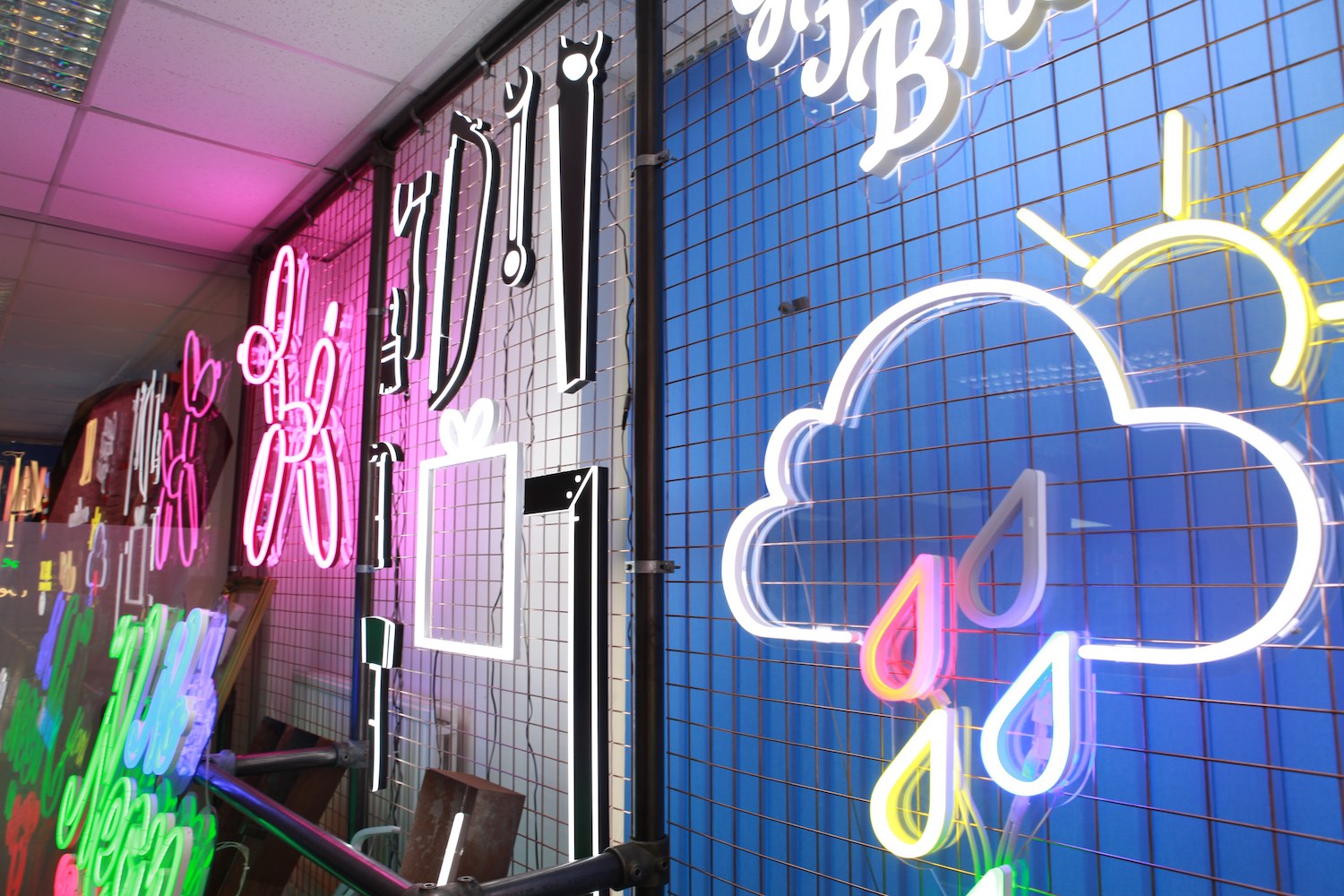
As more businesses focus on reducing their carbon footprint, Hoole said that signage comes under that umbrella. He added that while it may not always be the biggest slice of the pie, it is a visible one and if you are making claims about sustainability, signage has to back that up.
“We’ve also noticed retailers are more aware of where things are made,” Hoole commented. “Choosing a UK-made product makes a big difference, not just to lead times and quality control, but to the carbon footprint too. In fact, data shows that our UK-made Neonplus signs can produce up to 350 times less carbon than imported alternatives. That’s a huge difference, just by changing where you buy from.”
Going into more detail on Neonplus, this signage comes with certified CO2e data, allowing customers to see exactly what they are buying in terms of environmental impact. Hoole said The Sign Group is currently working on extending this to a new material the company has helped bring to market: a 30mm acrylic sheet made from 100% recycled content.
“It’s fully recyclable too, and early testing shows a reduction in carbon impact of around 47% compared to using virgin material; that’s a big step forward,” he said.
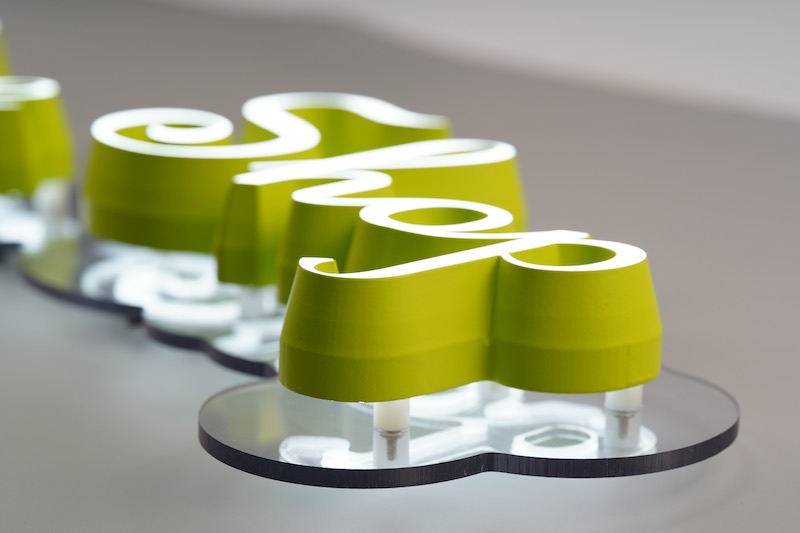
Neonplus products come with a five-year warranty as standard, which Hoole said reduces how often signs need replacing. He added: “It’s not just about using greener materials; it’s about using less over time. And of course, because everything’s made in-house here in Leeds, we’re not shipping goods halfway around the world. That alone can dramatically lower the environmental impact of a sign.”
Respond to rising demand
Turning to printed signage, Soyang Europe has been devoted to producing environmentally friendly products for a number of years and offers a range of media options. Sales director Oliver Mashiter said by adopting an eco-friendly approach with signs and displays, this can help to align with the changing demands of customers and partners.
“While becoming sustainable is not something retailers can achieve overnight, there are some simple, yet effective, changes that they can implement immediately to support them in the longer run,” Mashiter said. “One of these is to take a look at the type of material you are using in signage and displays. Switching to more planet friendly options can shine a more sustainable light on a business and allow you to respond to rising demand.”
Addressing concerns about the costs of adopting sustainable practices, Mashiter said that investing in sustainability offers both immediate and long-term benefits that outweigh the initial expenditures.
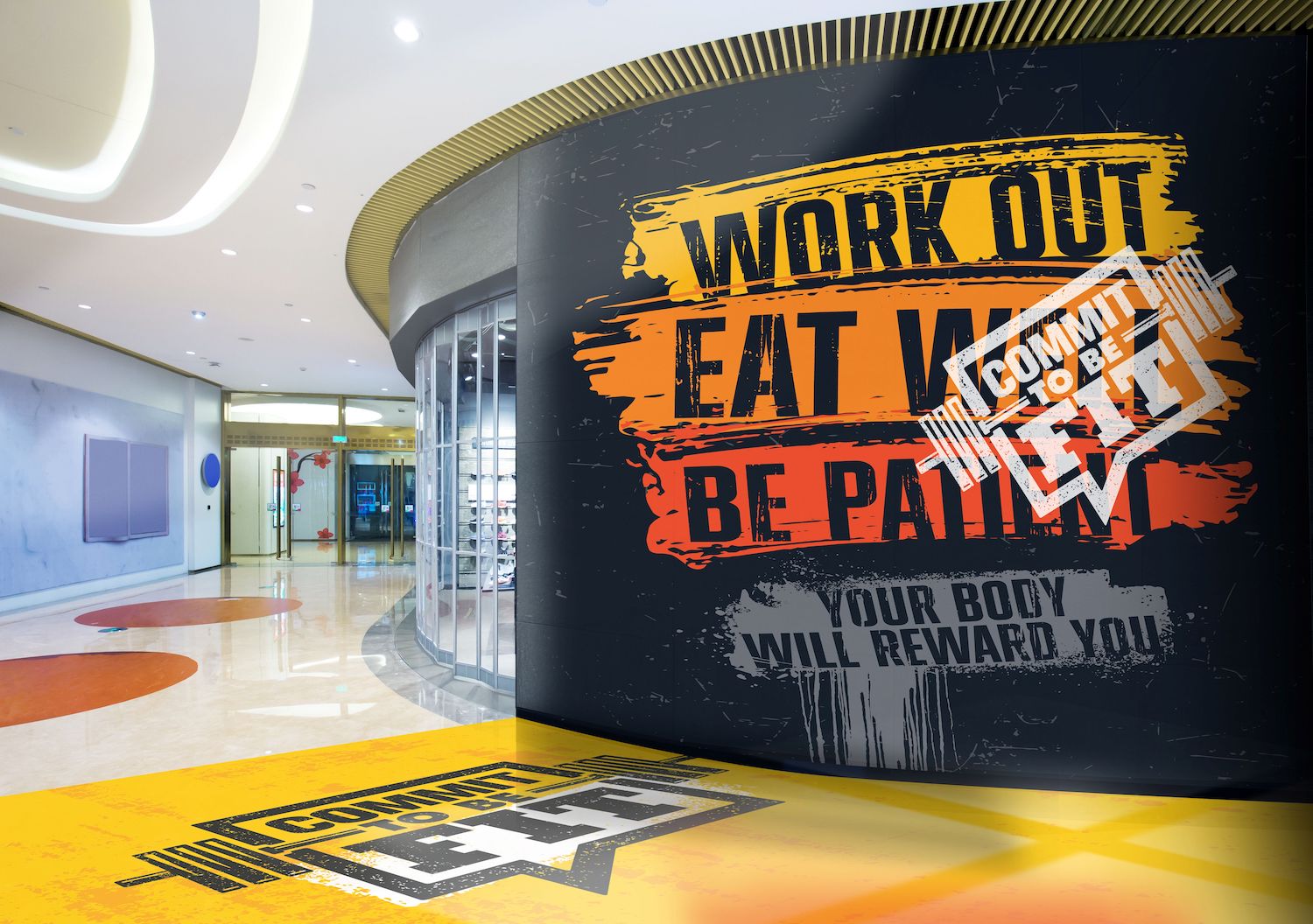
“Historically, eco-friendly materials carried a significant price premium,” he said. “For instance, the cost of recycled polyethylene (PE) materials was once approximately 30% higher than their non-recycled counterparts. Today, that difference has decreased to 5%, making sustainable options more financially accessible without compromising on quality.
“The demand for environmentally responsible products is growing. A significant portion of customers now prefer sustainable options, amid encouragement from their clients, who are often willing to pay a premium for them. By offering such solutions, businesses can attract new clients and enter into markets where sustainability is key, thereby enhancing their competitiveness.
“In time, prices will drop to be in line with PVC alternatives. As more demand grows, the price will fall and become more competitive; we are starting to see this with our Solar range.”
Other solutions within the backet at Soyang Europe include 601 RCY Starlight Backlit, which is made from 100% recycled ocean PET waste. Meanwhile, the SoTex collection of printable fabrics includes textiles for direct dye sublimation and transfer printing, as well as coated textiles for solvent, eco-solvent, UV and latex printers.
Enhance your image
Another materials supplier is Drytac, which, like Soyang Europe, has a range of sustainable products on offer. Steve Payne, product specialist at Drytac, said with consumers seeking solutions that have less impact on the world, this is creating a competitive advantage for those offering sustainable options to their customers.
“Tying in with this is brand reputation, being sustainable can enhance a company’s image, positioning it as a responsible and forward-thinking brand, helping it secure business from customers that also place importance on the planet,” he said.
“Sustainable materials don’t always come at a premium; many are competitively priced with traditional options. However, the idea of making a change can feel daunting. Whether it’s concerns around application methods, compatibility, or performance, switching to more sustainable solutions often comes down to education and reassurance. In reality, many of these products are just as easy to work with and can offer the same, if not better, results, along with the added benefit of aligning with evolving environmental expectations.”
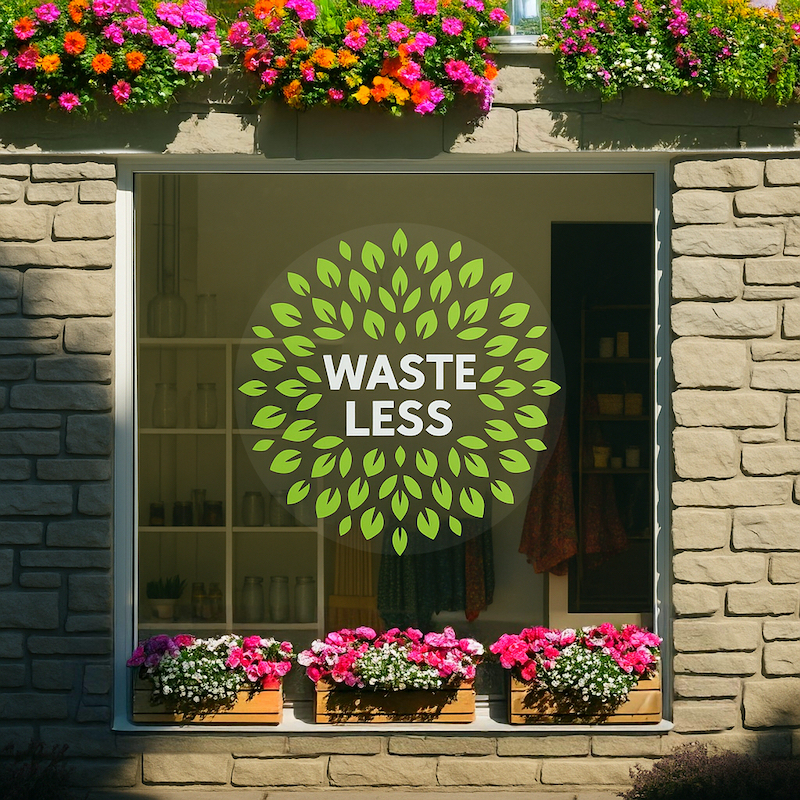
With this, Payne said we should all be doing our part to reduce our environmental Impact, be it implementing changes in business or altering the way we go about our daily lives. He added that sustainable practices help reduce waste, conserve resources, and lower carbon footprints, contributing to a healthier planet, and this will not be going away any time soon.
Drytac products that may be of interest to retailers include SpotOn SynTac, a polypropylene wall and window graphic media developed for simple, easy, and tool-free installation. There is also Polar Street FX, a PVC-free, aluminium print media designed for outdoor floor and wall graphics, with no lamination required, as well as Polar PET 170, a printable polyester PET film that is PVC-free.
Other options include ViziPrint Impress Clear, an optically clear PET film for vibrant window graphics, screen displays, and appliance branding and ReTac Clear PET, which, with ReTac’s permanently peelable adhesive, is an effective choice for windows, walls, and countertop graphics, removable cleanly even years later.
Meet environmental performance standards
In addition to material choice, retailers may wish to consider the type of technology used to print signage. This can relate to the print partners you are working with or your own printing machinery, if you elect to bring work in-house.
HP has long been an advocate for sustainable production, and this can be seen within its HP Latex range. This features many large-format printers that all run HP Latex ink, while graphics printed using this technology can be fully recycled when reaching their end of use, if printed on sustainable media.
“HP Latex inks do not contain any Hazardous Air Pollutants (HAPs), while they are also non-flammable and non-combustible,” said Noelle Peutat, global strategic sustainability lead for the large-format printing business at HP. “Add in that HP Latex ink is supplied in cardboard packs that can be recycled once they are empty, and this offers a simple yet effective route to more sustainable operating practices.
“In addition, the latest generation of HP Latex Inks are UL ECOLOGO certified, meaning they meet a range of stringent environmental performance standards and human health criteria.”
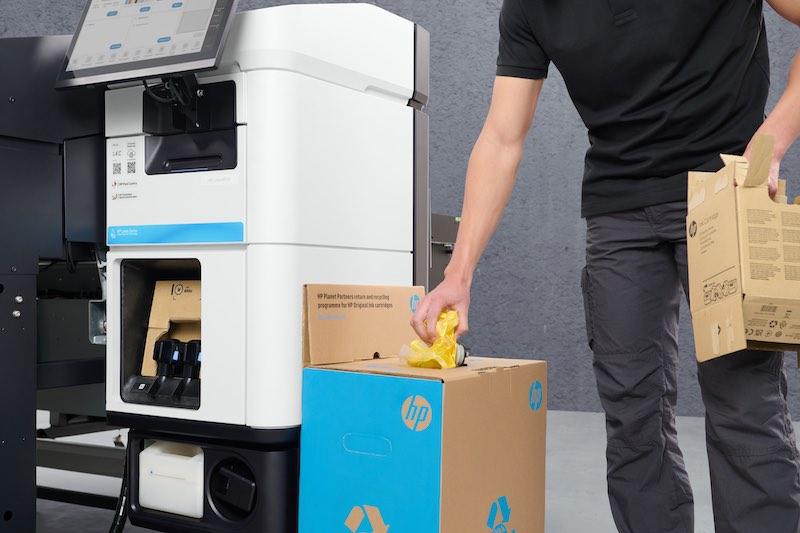
Peutat that HP’s focus stretches beyond its machinery, saying it is committed to supporting retailers in the long-term. Peutat said: “From smaller shops on the high street to large supermarkets, it is imperative for retailers to adapt to help satisfy demand from customers.”
With this, Peutat flagged certain auxiliary services. These include HP Planet Partners, its consumer repurpose and recycling program for HP end-of-life equipment and printing supplies.
Peutat said customers can also accelerate their print sustainability journey with the HP Sustainability Amplifier program, which part of HP PrintOS. This, Peutat added, offers tools, insights and recognition to advance their sustainability journey, with key features such as self-assessment and benchmarking, personalised recommendations, actionable resources, sustainability services, and recognition and differentiation.
“By repurposing materials and securely and responsibly recycling waste, print companies are helping reduce the environmental impact of electronic waste and greenhouse gas emissions, and supporting a more circular economy – helping to improve their own environmental credentials in the process,” Peutat said.
Making simple yet effective changes to the way you produce sign and display materials can have a significant impact on your sustainability. Consider speaking with suppliers to find out about the options available to you and how this can improve your credentials.



